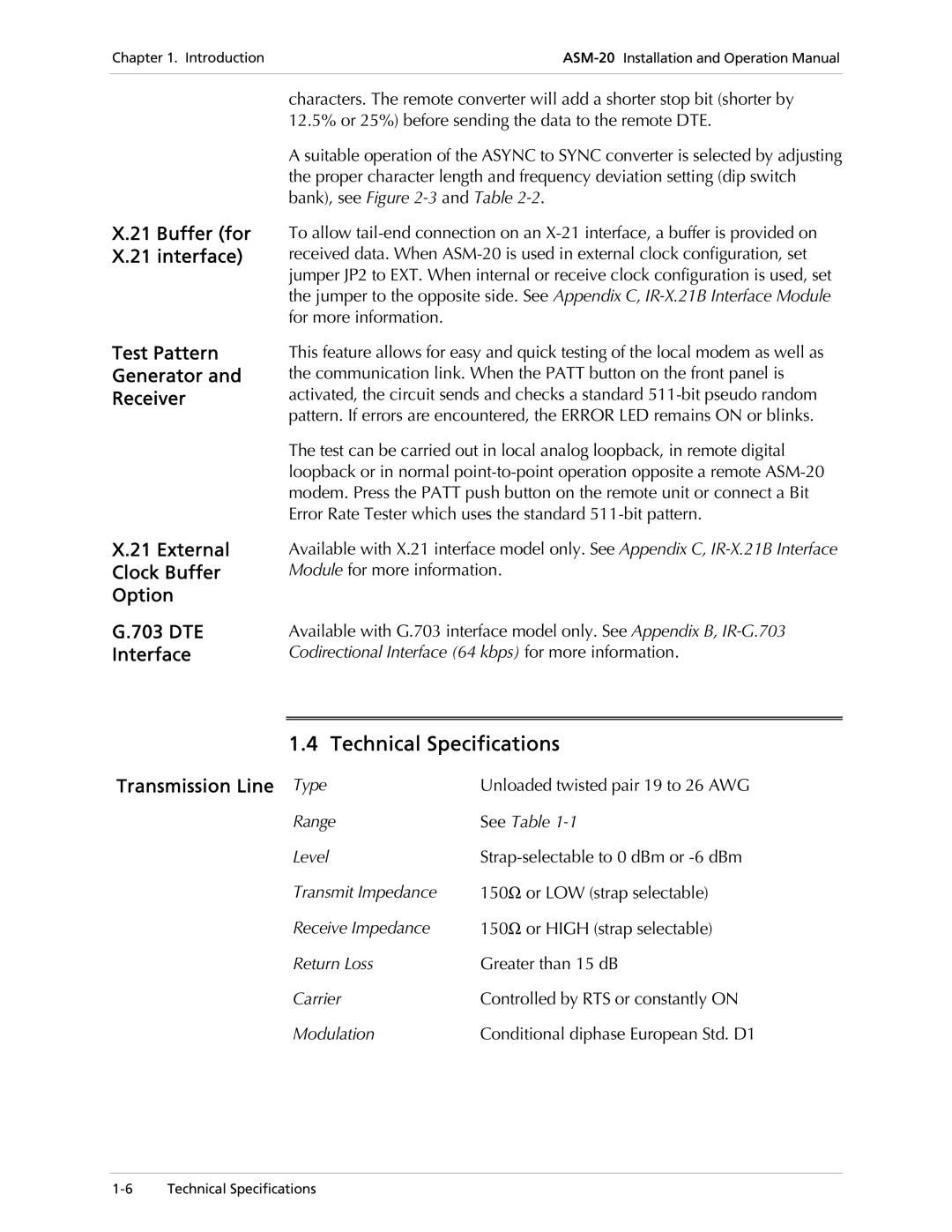
Chapter 1. Introduction | |
|
|
X.21 Buffer (for
X.21 interface)
Test Pattern
Generator and
Receiver
X.21 External
Clock Buffer
Option
G.703 DTE
Interface
characters. The remote converter will add a shorter stop bit (shorter by 12.5% or 25%) before sending the data to the remote DTE.
A suitable operation of the ASYNC to SYNC converter is selected by adjusting the proper character length and frequency deviation setting (dip switch bank), see Figure
To allow
This feature allows for easy and quick testing of the local modem as well as the communication link. When the PATT button on the front panel is activated, the circuit sends and checks a standard
The test can be carried out in local analog loopback, in remote digital loopback or in normal
Available with X.21 interface model only. See Appendix C,
Available with G.703 interface model only. See Appendix B,
1.4 Technical Specifications
Transmission Line Type | Unloaded twisted pair 19 to 26 AWG |
Range | See Table |
Level | |
Transmit Impedance | 150Ω or LOW (strap selectable) |
Receive Impedance | 150Ω or HIGH (strap selectable) |
Return Loss | Greater than 15 dB |
Carrier | Controlled by RTS or constantly ON |
Modulation | Conditional diphase European Std. D1 |
